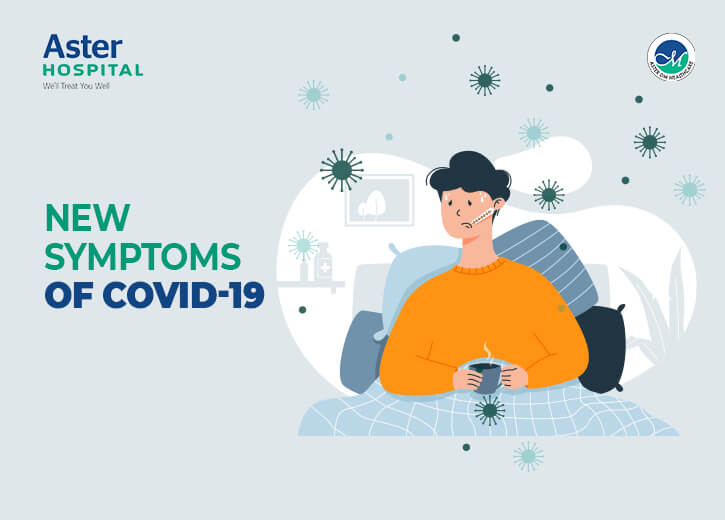Since it started, COVID-19 has shown a wide variety of symptoms, ranging from mild to moderate to severe or critical. The virus has evolved over time. Moreover, new variants have emerged displaying newer symptoms of COVID-19 in infected patients, along with the classic signs and symptoms, such as shortness of breath, cough, congestion, and so on.
The second wave of COVID-19, wherever it has hit, has been more infectious than it was before. Thus, it is crucial to be aware of these symptoms.
New symptoms of the Covid-19 second wave infection
According to studies, breathing difficulties in the second wave emerge right at the initial stage of the infection. This can lead to a decrease in oxygen saturation (SpO2 levels), resulting in lung damage and, in some cases, even multiple organ failure. Apart from this, the following are the newer symptoms of COVID-19:
1. Gastrointestinal tract infections: The GI tract includes the mouth, food pipe, stomach/gut, small and large intestine – the main organs of digestion. The symptoms of GI tract infections caused by COVID-19 are loss of hunger, abdominal pain, vomiting, and loose stools.
2. Hearing loss: Hearing loss may be mild, moderate or even severe resulting in sudden hearing loss, impaired hearing or a ringing sound in your ears, known as tinnitus. These symptoms might start early in the first week of the infection and get better over a period of time.
3. Extreme lethargy and weakness: Although these symptoms were associated with COVID-19 since the start, extreme lethargy and weakness have become more prominent in the second wave. The symptoms are an automatic immune response of the body to fight the virus, as it attacks the foreign substance object (SARS-CoV-2), thus making the COVID-19 positive patient feel tired and weak.
4. Pink eye or conjunctivitis: The new mutant strain of the coronavirus in India affects the eye in a peculiar way. It causes sudden bouts of conjunctivitis but only in one eye. However, it may cause irritation and sensitivity in the other.
5. Dry mouth or not enough saliva: A dry mouth can, in turn, lead to tooth and gum diseases and make you susceptible to further infections. The COVID-19 infection results in other manifestations of this symptom. These can range from changes in colour and texture of the tongue, difficulty in eating, sore blisters, and dry tongue.
6. Diarrhoea: As per various reports, most COVID-19 positive patients complained of persistent diarrhoea for 1to 14 days. The average duration the condition lasted for was 5 days. As diarrhoea is initially not considered to be a symptom of COVID-19 and can also be caused by other digestive issues, there is an understandable delay for it being tested for COVID-19
7. Headache: One of the newer symptoms is a prolonged headache that doesn’t go away even after taking painkillers. Also, sudden headaches can be another cause.
8. Skin rashes: As a result of mutation and new variants of COVID-19, infected individuals have reported rashed on their limbs, which are known as acral rashes. These can be a result of the immune system response to the virus.
9. Unexplained fatigue: A lot of infected people reported feeling fatigued and tired. In fact, some people only showed this is a symptom of the COVID-19 infection, and no other symptoms were to be found.
Word of advice
Do not panic if you notice these symptoms. Stay calm and isolate yourself from other family members. Consult with your doctor and get yourself checked for the infection at the earliest.



